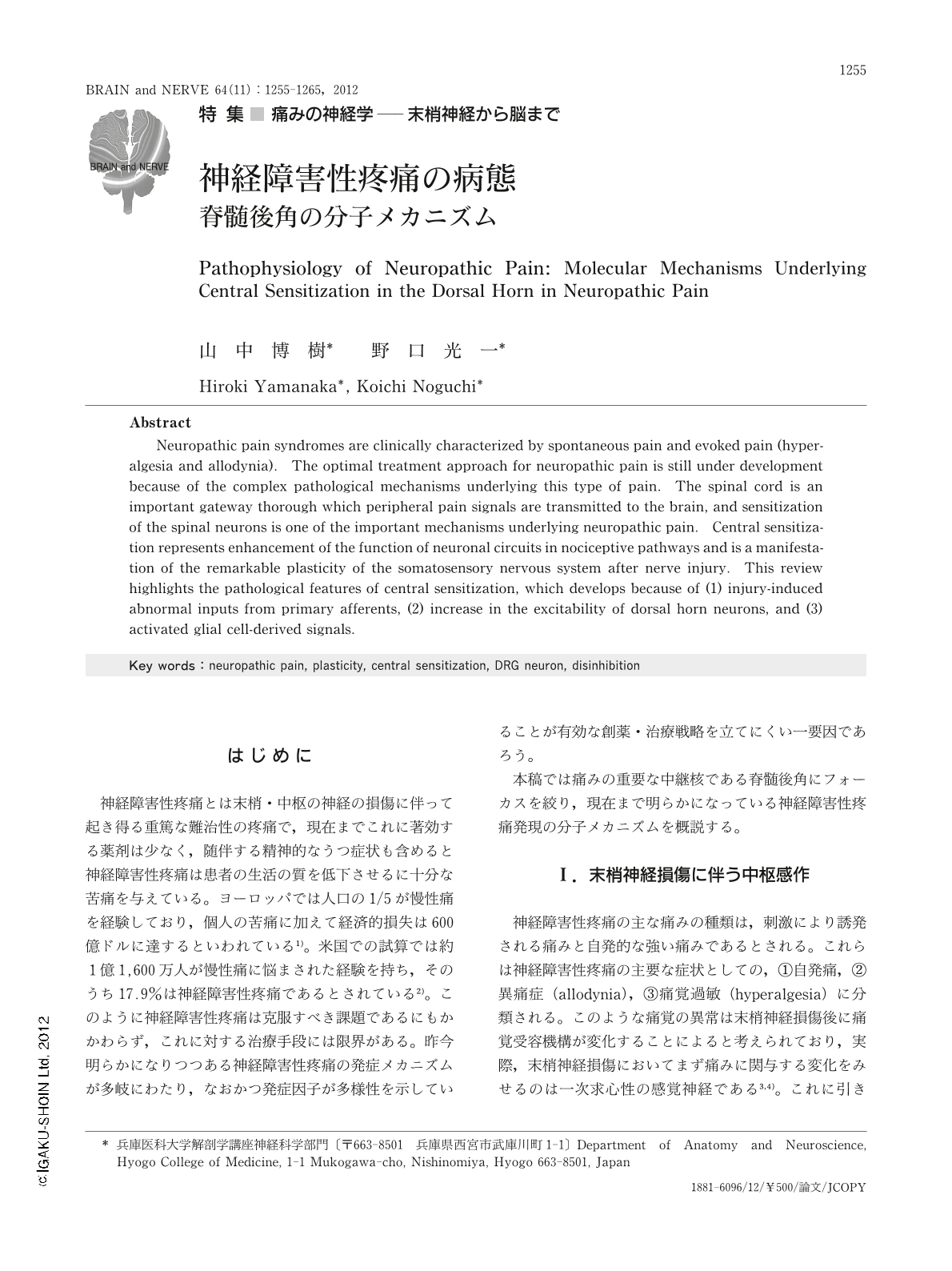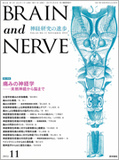Japanese
English
- 有料閲覧
- Abstract 文献概要
- 1ページ目 Look Inside
- 参考文献 Reference
はじめに
神経障害性疼痛とは末梢・中枢の神経の損傷に伴って起き得る重篤な難治性の疼痛で,現在までこれに著効する薬剤は少なく,随伴する精神的なうつ症状も含めると神経障害性疼痛は患者の生活の質を低下させるに十分な苦痛を与えている。ヨーロッパでは人口の1/5が慢性痛を経験しており,個人の苦痛に加えて経済的損失は600億ドルに達するといわれている1)。米国での試算では約1億1,600万人が慢性痛に悩まされた経験を持ち,そのうち17.9%は神経障害性疼痛であるとされている2)。このように神経障害性疼痛は克服すべき課題であるにもかかわらず,これに対する治療手段には限界がある。昨今明らかになりつつある神経障害性疼痛の発症メカニズムが多岐にわたり,なおかつ発症因子が多様性を示していることが有効な創薬・治療戦略を立てにくい一要因であろう。
本稿では痛みの重要な中継核である脊髄後角にフォーカスを絞り,現在まで明らかになっている神経障害性疼痛発現の分子メカニズムを概説する。
Abstract
Neuropathic pain syndromes are clinically characterized by spontaneous pain and evoked pain (hyperalgesia and allodynia). The optimal treatment approach for neuropathic pain is still under development because of the complex pathological mechanisms underlying this type of pain. The spinal cord is an important gateway thorough which peripheral pain signals are transmitted to the brain, and sensitization of the spinal neurons is one of the important mechanisms underlying neuropathic pain. Central sensitization represents enhancement of the function of neuronal circuits in nociceptive pathways and is a manifestation of the remarkable plasticity of the somatosensory nervous system after nerve injury. This review highlights the pathological features of central sensitization, which develops because of (1) injury-induced abnormal inputs from primary afferents, (2) increase in the excitability of dorsal horn neurons, and (3) activated glial cell-derived signals.

Copyright © 2012, Igaku-Shoin Ltd. All rights reserved.


